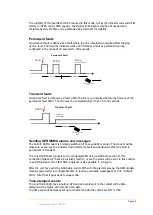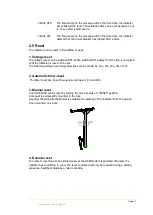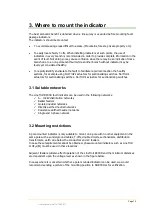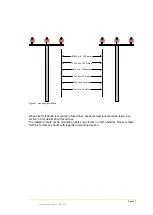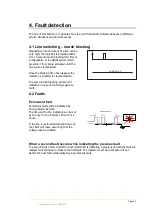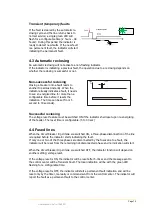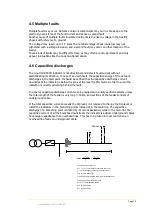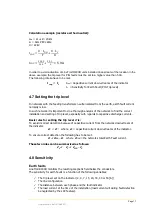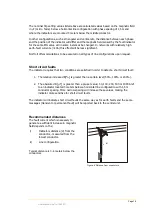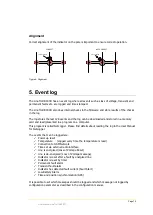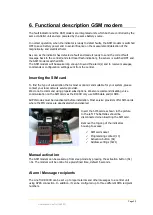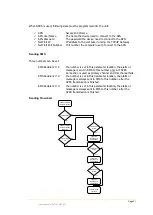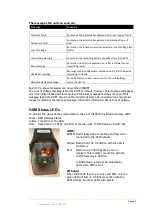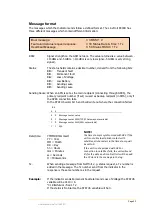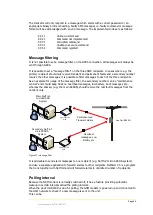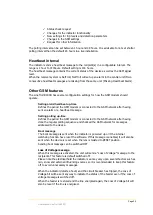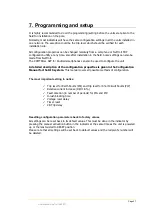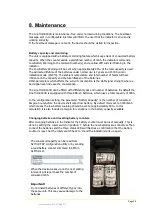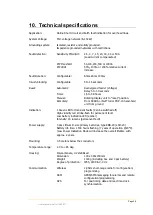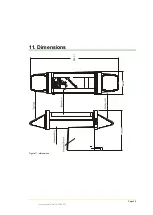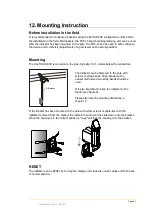
Page 23
User Manual LineTroll R400D
Message format
The messages which the Indicator sends follow a defined format. The LineTroll R400D has
three different messages which contain different information:
RSSI:
Signal strength on the GSM network. The value returned is a value between -
113dBm and -51dBm. (-113dBm is very low signal, -51dBm is very strong
signal).
Status:
The status field contains a decimal number, derived from the following bits:
Bit0:
Transient fault
Bit1:
Permanent fault
Bit2:
Loss of Voltage
Bit3:
Low Battery
Bit4:
Sending cause
Bit5:
Sending cause
Sending Cause: When an APN is set as the main recipient (connecting through GPRS), the
primary recipient number (if set) is used as backup recipient (in SMS), only if
the GPRS connection fails.
In the STATUS word, bit 5 and 6 will write out where the connection failed.
Date/time:
YYMMDDhhmmsstt
YY = Year
MM = Month
DD = Day
hh = Hours
mm = Minutes
ss = Seconds
tt = Milliseconds
Tx:
When sending a message from NetTroll, e.g. status request, a Tx number is
added in the message. The Tx number send from the indicator in the
response is the same number as in the request.
Example:
If the indicator sends Permanent Fault alarm and Loss of Voltage the STATUS
variable will be 0110 = 6.
‘
3 18
6
Date & Time
1 Tx’
If the status is No Alarms, the STATUS variable will be 0.
NOTE!
The time-stamp is synchronized with GPS. If the
unit is not able to establish contact with
satellites, all characters in the time-stamp will
be set to 0.
If the unit is not equipped with GPS or
connection to satellites fails, the unit will send
0’s for the date and time. Ne
tTroll will then add
the PC clock to the message in the log.
Boot message:
3 3 RSSI 1 0
Fault alarm/status request response:
3 18 Status Date & Time 1 Tx
Heartbeat Message
3 5 0 Status RSSI 0 1 Tx
Bit
5 4
0 0
Message sent as set up
0 1
Message sent as SMS (TCP/IP Gateway not available)
1 0
Message sent as SMS (APN not available)
1 1
N/A


